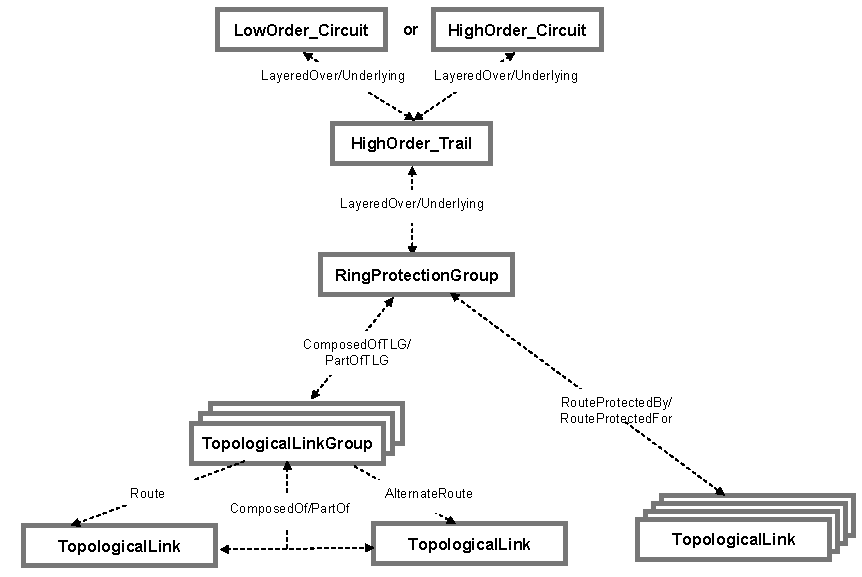4-Fiber Bidirectional Line Switched Ring (BLSR) or Multiplexed Section-Shared Protection Ring (MS-SPRing) protection is a line protection scheme used in SONET/SDH rings. In this scheme a bidirectional line is used to carry the traffic; another bidirectional line is reserved for protection. When failure occurs, the traffic is switched from the working lines onto the protection lines. This scheme first activates span switching when there is a line level failure. If span switching is not enabled or not possible, the scheme activates ring switching away from the failure.
Nodes are connected via a pair of bidirectional lines (working and protection lines) to form a ring. Up to 16 Network elements can be connected in a 4F-BLSR/4F-MS-SPRing ring. When a line failure occurs, the nodes that bookend the failed line switch the traffic from the working path to one of the two protection paths. The first protection path uses the protection span (similar to 1+1 APS) while the second protection path traverses around the ring opposite to the failure.
Physical configuration of the 4F-BLSR/4F-MS-SPRing protection groupshows the physical configuration of the 4F-BLSR/4F-MS-SPRing Protection Group.

Classes and relationships used in 4F-BLSR/4F-MS-SPRing protectionshows the classes and relationships used to model 4F-BLSR/4F- MS-SPRing protection. Each HighOrder_Circuit or LowOrder_Circuit across a 4F-BLSR/4F-MS-SPRing ring is LayerOver a HighOrder_Trail. The HighOrder_Trail is LayeredOver a RingProtectionGroup object. Each RingProtectionGroup object has a ComposedOfRPG relationship with TopologicalLinkGroup objects. Each TopologicalLinkGroup object has a Route relationship for the working route and an AlternateRoute for the alternate route, which is similar to the 1 + 1 protection group for a link between two network elements. Each RingProtectionGroup also has a RouteProtectedBy relationship with TopologicalLink objects, which participate in ring switching.
